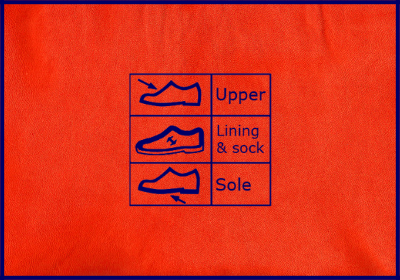5 shoe details your product page needs
Do you think your shoe product pages can have too much information on them? Maybe you kept your product pages minimal when you launched your website because your template didn’t allow you to include everything. Are you wondering if there’s anything you missed that could boost your sales? I have been analysing shoe websites for decades, and I’ve come up with 5 shoe details your product page needs if you want to sell as many shoes as possible.

1. Good photos
Have you ever considered buying a pair of shoes but been put off by poor quality photography on the website? High quality photography not only allows your customers to see the shoes properly, it also makes them think your website is established and trustworthy. Accurate photos also mean fewer returns. Your customers will know what they are getting.

If you want to take your own photos rather than pay a professional photographer, I’m building a course to help you take your own high quality photos.
2. Materials
What are your shoes made from? It shocks me how little information some shoe brands provide. As a bare minimum tell people which materials are used for:
- Upper
- Lining
- Sole

If you want to get really detailed (and earn a gold star from your customers), tell them what these components are made from too:
- Laces + aglets (lace ends)
- Eyelets
- Buckles
- Stitching
3. Country of origin
Where are your shoes made? I tend to assume – as will your customers – that if you don’t state otherwise, you are making your shoes in East or Southeast Asia. Rightly or wrongly, brands tend to be more free with this information when their shoes are made in Europe, Brazil or sometimes Mexico.

If you are happy to make your shoes in China, Vietnam, Cambodia or India because it means your customers receive better value for money, then consider sharing this information with them. The future of brands is transparency. Being honest with your customers allows you to build an emotional connection with them. Would you be friends with someone who wouldn’t tell you where they grew up? Perhaps you would because you’re a nice person, but it might feel a bit weird. There could be a feeling of distance between you.
4. Sizing
Size guides are useful, but customers may assume the size conversion chart you have used is generic rather than directly applicable to your products. Stating “If you are between sizes, size up” or “Fits a slightly wider than average foot” on a product page can be much more helpful to customers trying to decide which size to purchase.

Using a review plugin that allows customers to share how the shoes fit can also be extremely useful to your customers.
This article about reducing customer returns inspired me to make the following suggestion: If you really want to get ahead of your competition, include measurements such as heel height, boot shaft height and strap width. Just note which shoe size the measurements are based on as they may be different for each size.
5. Reviews
It’s easier for your customers to trust other customers, than for them to trust you: the brand. A customer who has written a review is likely to be honest, whereas you are bound to write positive things about your products so people will buy them.

As soon as you get your first sale, beg or bribe the purchaser to write a review. Also encourage people you have gifted shoes to, to write product reviews for your website (within legal guidelines). Reviews tend to have a snowball effect on sales. The more you have, the more sales you make.
You will notice I haven’t insisted you include a flowery product description in your 5 shoe details your product page needs. However I do recommend including a product description for SEO purposes e.g. “the perfect block heel for wedding guests”. Just don’t expect customers to read it, especially if it’s a big chunk of text. Outfit ideas and styling tips are better included in your photography, and material information is easier to read in list form.

Leave a Comment: